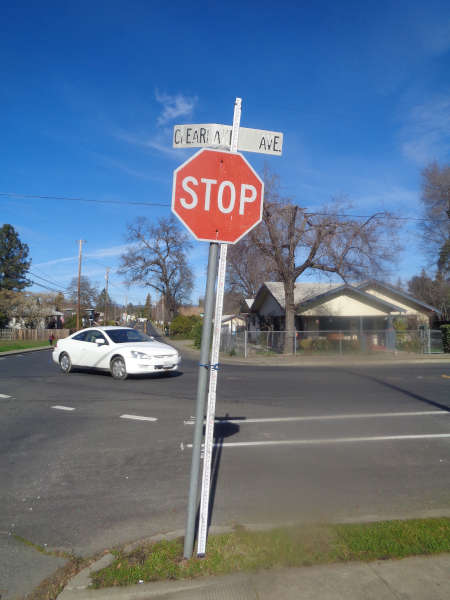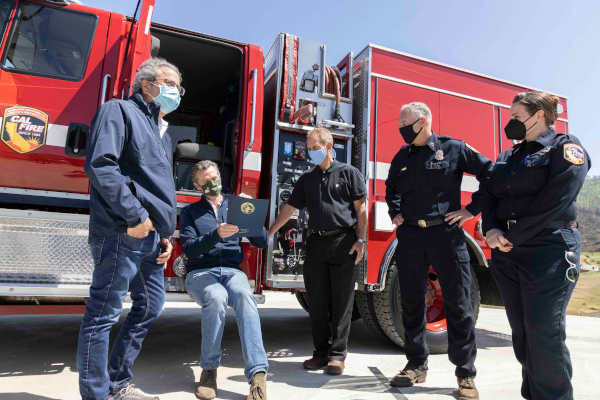- Elizabeth Larson
- Posted On
CPUC places PG&E into enhanced oversight process due to ‘insufficient' progress in mitigating wildfire risks
The CPUC voted to place PG&E into the first of the six steps in the Enhanced Oversight and Enforcement Process, which was created specifically to hold the company accountable for improving its safety record after it emerged from bankruptcy in 2020.
The resolution to take the action shows that the process allows the commission “to take additional steps to ensure PG&E is improving its safety performance” if specific “triggering events” occur.
The resolution notes, “The steps range from Step 1, which contains enhanced reporting and oversight requirements, to Step 6, involving the potential revocation of PG&E’s ability to operate as a California electric utility.”
The CPUC’s resolution invokes Step 1, “with regard to PG&E’s insufficient progress with risk-driven wildfire mitigation efforts,” and requires PG&E to submit a corrective action plan
within 20 days of the resolution effective date.
Both the CPUC’s Public Advocates Office and The Utility Reform Network, or TURN, asked the CPUC to take stronger action against PG&E.
“We’re glad the CPUC took this step but it should have included closer oversight of PG&E’s other shortcomings in its resolution,” said Maya Chupkov, the Public Advocates Office’s director of strategic communications and outreach, on Thursday afternoon.
In a statement issued to Lake County News, PG&E said its most important responsibility is the safety of its customers and the communities it serves.
“We take today’s vote and the feedback from the Wildfire Safety Division and others seriously, and as a result we have already implemented significant improvements to our Enhanced Vegetation Management program and will continue to do so as outlined in our 2021 Wildfire Mitigation Plan. It is in all of our best interests to work together to improve our safety performance for the benefit of our customers and the communities we are privileged to serve,” the company said.
PG&E said is already has implemented a new 2021 wildfire distribution risk model and elevated its transparency and oversight, explaining that its newly formed Wildfire Risk Governance Steering Committee is responsible for approving the selection of enhanced vegetation management work locations “and monitoring regular reporting of work completed to ensure actual work is aligned with the planned risk reduction and performed with the highest level of quality.”
The company said this year it’s tripling the number of its work verification inspectors that are performing post-tree work inspections on work performed in high fire-threat districts to make sure work is getting done in its enhanced and routine vegetation management programs.
It’s using ground-based LiDAR in vehicles as a post-inspection review of completed circuits for vegetation management work and has staffed a centralized team of arborists to investigate any concerns or findings raised by the CPUC, the Federal Monitor, the Governor’s Operational Observer or any of our external stakeholders to ensure timely follow-up and resolution any issues that are identified.
PG&E said it’s also implementing a more effective operating structure that establishes daily operating reviews to improve visibility into all facets of its performance.
PG&E’s went into bankruptcy in 2019 following several catastrophic wildfires in its service territory – among them, the 2017 North Bay firestorm that included the Sulphur fire in Clearlake Oaks in Lake County and the 2018 Camp fire that destroyed Paradise in Butte County.
The CPUC later approved PG&E’s reorganization plan and allowed it to emerge from bankruptcy, but the company had to follow specific financial and operational conditions, the CPUC’s document shows.
The Enhanced Oversight and Enforcement Process was instituted because of the need to reduce the risk of catastrophic wildland fires caused by PG&E’s infrastructure, the commission reported.
‘Triggering event’ involves vegetation management
The CPUC resolution explains that the triggering event that led to the action was that PG&E has made “insufficient progress toward approved safety or risk-driven investments related to its electric business.”
Specifically, the commission said PG&E has not sufficiently prioritized its vegetation management based on risk.
“PG&E ranks its power line circuits by wildfire risk, but the work performed in 2020 demonstrates that PG&E is not making risk-driven investments. PG&E is not doing the majority of EVM [enhanced vegetation management] work – or even a significant portion of work – on the highest risk lines,” the document says.
The document goes on to explain that over the course of 2020 and early 2021, PG&E provided the CPUC’s Wildfire Safety Division with three different lists ranking its power lines by risk. Each risk ranking differed from the others in material respects, the commission said.
On each of the lists, the CPUC said it showed that less than 5 percent of the enhanced vegetation management work that PG&E completed in 2020 was on the 20 highest-risk power lines. This failure to appropriately prioritize and conduct the vegetation management on the highest-risk power lines is a triggering event under step one of the process.
Pertinent to Lake County, the Middletown circuit is featured on one of those lists, issued in September of last year, ranking the top 20 highest risk circuits.
At that time, PG&E reported 59 miles of enhanced vegetation management was completed on those circuits, with nearly 20 miles on the Middletown circuit alone, the most of any of the circuits.
The CPUC is requiring PG&E to submit its corrective action plan for approval by the commission’s executive director. The plan is to consist of reporting starting on day 20 following the resolution’s approval and every 90 days afterward until the CPUC no longer requires it.
Among the many items required in that plan, PG&E has to explain what contributed to its failure to adequately prioritize the highest risk lines; a detailed list of vegetation management projects for this calendar year and the subsequent one, if available; changes to its risk models; and a detailed description of the circumstances that contributed to PG&E management’s inconsistent reporting on the details of its risk modeling and risk ranking lists.
In the resolution’s conclusion, it notes, “Nothing in this Resolution precludes the Commission from placing PG&E into another Step of the EOE Process if warranted.”
Separately, on Tuesday, PG&E submitted a response to the Public Advocates Office’s recommendation that the CPUC’s Wildfire Safety Division reject PG&E’s proposed wildfire safety plan due to “numerous significant deficiencies.”
In response, PG&E said it has so far conducted more than 1,800 miles of enhanced vegetation management and 342 miles of system hardening; installed more than 600 weather stations and high definition cameras; and also installed 603 sectionalizing devices, which allowed for a reduction in the scope and impact of PSPS events in 2020.
“We also recognized some gaps in 2020 and offered specific plans for addressing those gaps in 2021,” the company said.
Email Elizabeth Larson at This email address is being protected from spambots. You need JavaScript enabled to view it.. Follow her on Twitter, @ERLarson, or Lake County News, @LakeCoNews.
377568108 - CPUC resolution on PG&E by LakeCoNews on Scribd










